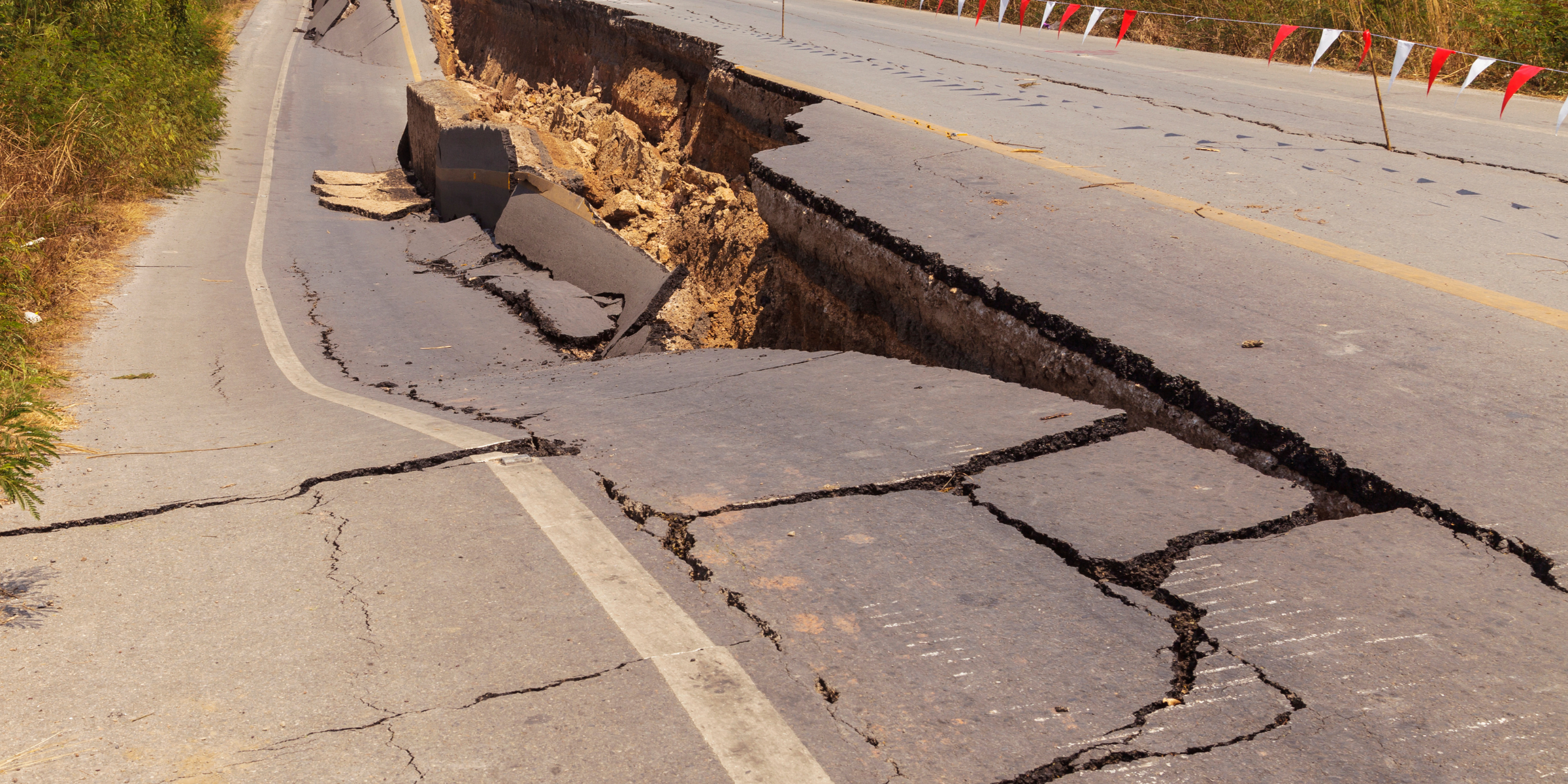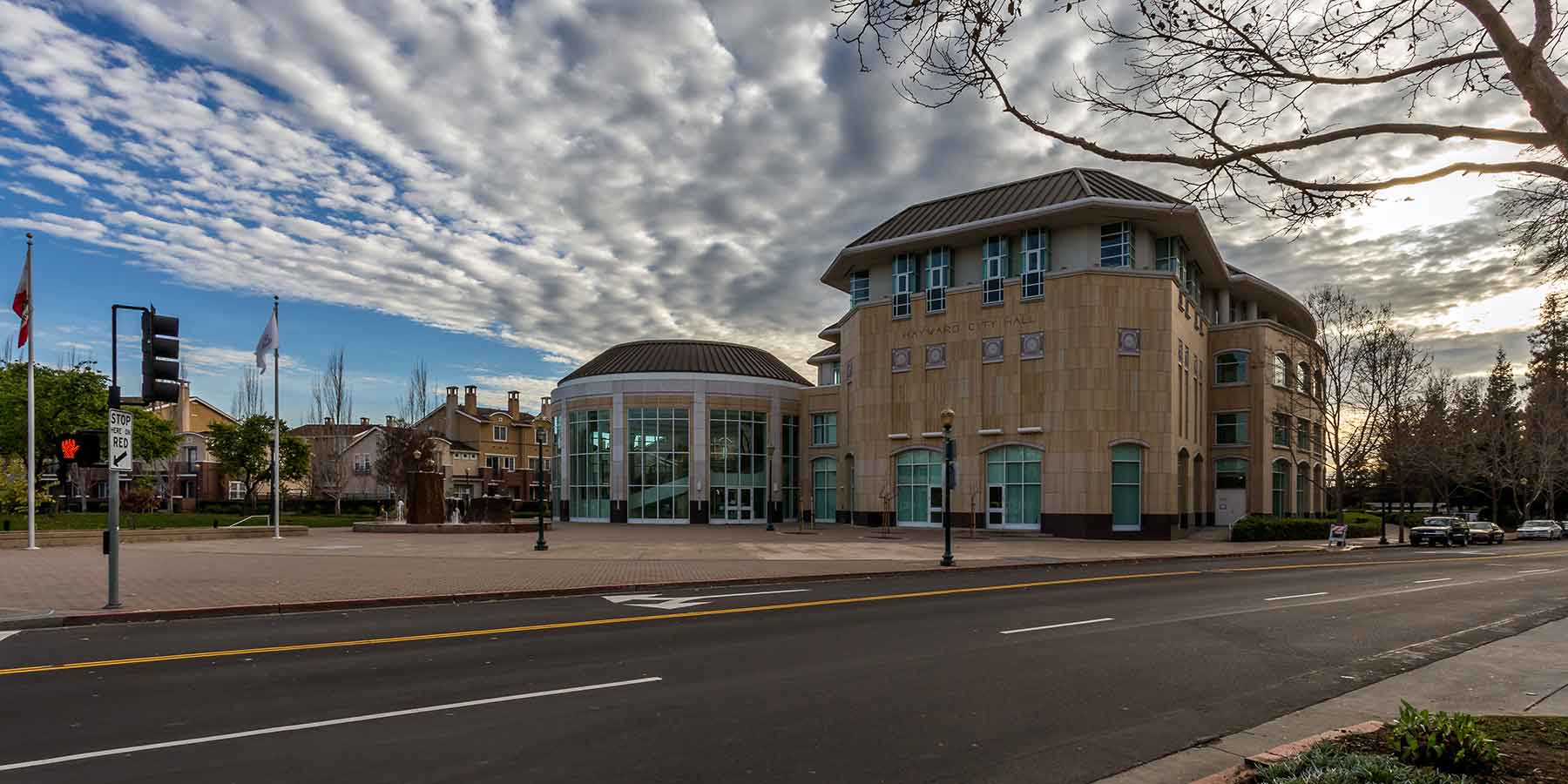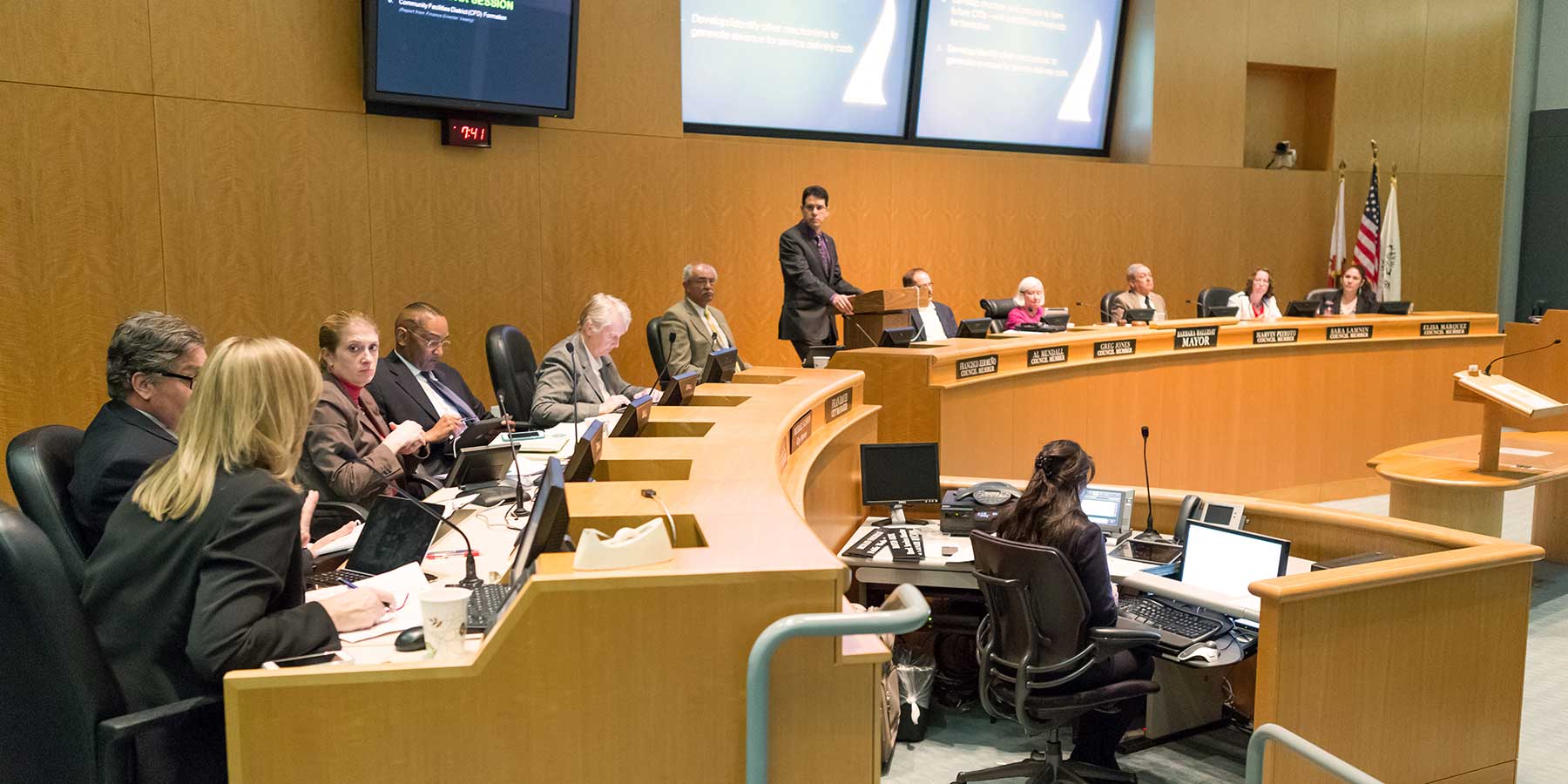Hazards Element

The city of Hayward is located in a region that is prone to a variety of natural disasters. The city’s geologic setting was formed by regional and local earthquake faults, many of which are still active and can generate devastating damage to buildings and infrastructure in the event of an earthquake. The city’s climate can also create hazardous conditions. Severe winter and spring storms can cause landslides in hillside areas and flooding along stream corridors and low-lying areas near the San Francisco Bay. Dry weather during spring and summer months can create hazardous conditions related to wildland fires, which when combined with strong Diablo winds, pose a significant risk to hillside neighborhoods. Climate change is projected to increase the frequency and severity of climate hazards, including increased flood, landslide, drought, extreme heat, and wildfire risks. In addition to natural hazards, Hayward also has a number of transportation facilities and industrial businesses that create risks for man-made hazards, such as aircraft accidents, hazardous material spills, and exposure to excessive noise.
While it is impossible to completely avoid natural and man-made hazards, the Hazards Element establishes goals and policies to protect life and minimize property damage during future disasters and emergencies. The goals and policies address regional hazards mitigation, seismic and geologic hazards, climate change, flood hazards, rising sea levels, wildland wildfires, hazardous materials, airport hazards, and noise.
Several other Elements of the General Plan provide supporting goals and policies that will help the Hayward community prepare for and respond to hazards, including the Community Safety Element, the Natural Resources Element, Public Facilities Element, Environmental Justice Element, the Climate Action Plan, and the Community Health and Quality of Life Element.
Hazards Table and Diagram:
The City shall use the following table and figure to determine potential noise exposure impacts, noise compatibility thresholds, and the need for mitigation:
Hazards Goals:
The impacts of disasters are rarely confined to the limits of a single jurisdiction, and almost always affect multiple agencies within a region. As a result, the Federal Disaster Mitigation Act of 2000 encourages cooperation between State, regional, and local agencies, prompting them to work together to mitigate hazards. This goal and its supporting policies are designed to promote a disaster-resilient region through regional coordination and mitigation planning. This is accomplished by implementing a Local Hazards Mitigation Plan, a comprehensive plan that addresses local hazards in coordination with state and regional agencies. By participating in regional and local hazards mitigation, the City will minimize disaster risks and improve the safety of the Hayward community.
HAZ-1: Promote a disaster-resilient region by reducing hazard risks through regional coordination and mitigation planning. [Source: Existing Goal, City Staff]
HAZ-1.1: Local Hazards Mitigation Plan
The City shall coordinate with regional and local agencies to implement an updated Resiliency Plan (former Local Hazards Mitigation Plan). [Source: Existing Policy modified; City Staff] (IGC/MPSP)
HAZ-1.2: Plan Implementation & Monitoring:
The City shall monitor and evaluate the success of the Resiliency Plan (Local Hazards Mitigation Plan). The City shall ensure that strategies are prioritized and implemented through the Capital Improvement Program and by providing adequate budget for on-going programs and Department operations. [Source: Existing Policy modified; City Staff] (MPSP/CSO/FB)
HAZ-1.3: Plan Updates:
The City shall support the Association of Bay Area Governments (ABAG) in its role as the lead agency that prepares and updates the Multi-Jurisdictional Local Hazards Mitigation Plan. If ABAG cannot fulfill this role in the future, the City shall coordinate with Alameda County and other local agencies to encourage the development and implementation of a new Multi-Jurisdictional Local Hazards Mitigation Plan. Ensure all future plan updates include climate change adaptation measures. [Source: Existing Policy modified; City Staff] (IGC)
Goal HAZ-2: Protect life and minimize property damage from potential seismic and geologic hazards. [Source: Existing Goal, modified]
Hayward is located in a seismically active region that contains several major active faults, including the San Andreas Fault, Hayward Fault, and Calaveras Fault. The Hayward Fault crosses through the city and generally runs parallel and within a few hundred feet of Mission Boulevard. Other potentially active faults within Hayward include the Chabot Fault, the Carlos Bee Fault, and several adjacent and secondary faults. As a result of its location and geologic setting, the city of Hayward is subject to a variety of seismic and geologic hazards, including fault rupture, strong ground shaking, liquefaction, and landslides. In addition, segments of the city could flood if an earthquake generates a tsunami or causes an up-stream dam to fail. This goal and its supporting policies are designed to minimize risks associated with seismic and geologic hazards.
HAZ-2.1: Seismic Safety Codes and Provisions:
The City shall enforce the seismic safety provisions of the Building Code and Alquist-Priolo Special Studies Zone Act to minimize earthquake-related hazards in new construction, particularly as they relate to high occupancy structures or buildings taller than 50 feet in height. [Source: Existing Policy] (RDR)
HAZ-2.2: Geologic Investigations:
The City shall require a geologic investigation for new construction on sites within (or partially within) the following zones:
- Fault Zone (see Figure 9.2-1 in the Hazards Background Report)
- Liquefaction Zone (see Figure 9.2-2 in the Hazards Background Report)
- Landslide Zone (see Figure 9.2-3 in the Hazards Background Report)
A licensed geotechnical engineer shall conduct the investigation and prepare a written report of findings and recommended mitigation measures to minimize potential risks related to seismic and geologic hazards. [Source: Existing Policy; City Staff, GPUTF] (RDR)
HAZ-2.3: Fault Zones Assumption:
The City shall assume that all sites within (or partially within) any fault zone are underlain by an active fault trace until a geotechnical investigation by a licensed geotechnical engineer proves otherwise. [Source: Existing Policy] (RDR)
HAZ-2.4: New Building in a Fault Zone:
The City shall prohibit the placement of any building designed for human occupancy overactive faults. All buildings shall be set back from active faults by at least 50 feet or as recommended by a licensed geotechnical engineer based on a site and project specific evaluation. [Source: Existing Policy, modified] (RDR)
HAZ-2.5: Existing Buildings in a Fault Zone:
The City shall prohibit the expansion of existing commercial and multi-family buildings (constructed prior to the adoption of the Alquist-Priolo Special Studies Zone Act) that are located over an active fault. Renovations to existing buildings within a fault zone shall be subject to the limitations and requirements of the Alquist-Priolo Special Studies Zone Act. [Source: Existing Policy, modified; City Staff] (RDR)
HAZ-2.6: Infrastrucutre and Utilities:
The City shall require infrastructure and utility lines that cross faults to include design features to mitigate potential fault displacement impacts and restore service in the event of major fault displacement. Mitigation measures may include plans for damage isolation or temporary bypass by using standard isolation valves, flexible hose or conduit, and other techniques and equipment. [Source: Existing policy] (RDR)
HAZ-2.7: Dam Failure:
The City shall coordinate with agencies responsible for the maintenance of the South Reservoir Dam, the Del Valle Dam, and other small dams along Alameda Creek to ensure that dam infrastructure is maintained and enhanced to withstand potential failure during an earthquake. [Source: Existing Policy, City Staff] (IGC)
HAZ-2.8: Tsunamis:
The City shall coordinate with the Hayward Area Recreation and Park District (HARD), the East Bay Regional Parks District (EBRPD), and the Alameda County Flood Control and Water Conservation District to efficiently evacuate shoreline parks during and prior to potential tsunami events with consideration to sea level rise increasing tsunami impact. [Source: Existing Policy modified, City Staff] (CSO/MPSP/IGC)
HAZ-2.9: Seismic Retrofits:
The City shall encourage property owners to upgrade buildings for seismic safety purposes, especially masonry and soft-story buildings (i.e., buildings designed with minimal bracing on the first floor). [Source: Existing Policy, City Staff; GPUTF; Public] (MPSP/PI)
HAZ-2.10: City Facilities:
The City shall strive to seismically upgrade existing City facilities that do not meet current building code standards. Where upgrades are not economically feasible, the City shall consider the relocation and/or reconstruction of facilities. [Source: Existing Policy; City Staff] (PI/CSO)
HAZ-2.11: Critical Facilities:
The City shall encourage seismic upgrades to hospitals, schools, long-term care facilities, and other important facilities that do not meet current building code standards. Where upgrades are not economically feasible, the City shall encourage the relocation and/or reconstruction of facilities. [Source: Existing Policy; City Staff] (PI/CSO)
HAZ-2.12: Public Awareness:
The City shall promote greater public awareness of earthquake hazards and promote resources and programs to help property owners make their homes and businesses more seismically safe. [Source: Existing Policy] (PI)
Goal HAZ-3: Protect life and minimize property damage from potential flood hazards.
Various parts of Hayward are subject to flooding during major storm events, including shoreline areas and upland areas located along streams, creeks, and drainage ways. The geographic extent of local flood hazards are anticipated to increase in the next century as a result of rising sea levels caused by global warming. Extreme weather conditions caused by global warming could also increase flooding risks during major storms. This goal and its supporting policies are designed to minimize damage and risks associated with flood hazards, including flood hazards associated with extreme weather caused by global warming. Related policies that address rising sea levels are discussed under Goal 4.
HAZ-3.1: FEMA Coordination:
The City shall coordinate with the Federal Management Agency (FEMA) to ensure that Federal Insurance Rate Maps correctly depict flood hazards in the city.
HAZ-3.2: Development in Floodplains:
The City shall implement Federal, State, and local requirements related to new construction in flood plain areas to ensure that future flood risks to life and property are minimized.
HAZ-3.3: Flood Plain Management Ordinance:
The City shall maintain and enforce a Plain Management Ordinance to:
- Promote public health, safety, and general welfare by minimizing public and private losses due to floods,
- Implement the Cobey-Alquist Plain Management Act, and
- Comply with the eligibility requirements of the National Insurance Program.
HAZ-3.4: Changing Flood Conditions Associated with Global Warming:
The City shall coordinate with the Alameda County and Water Conservation District to evaluate the need to expand the capacity of flood control facilities based on changing flood conditions associated with global warming and extreme weather.
HAZ-3.5: Public Awareness:
The City shall promote greater public awareness of flooding hazards and promote resources and programs to help property owners protect their homes and businesses from flood damage.
Goal HAZ-4: Safeguard the Hayward shoreline, open space, recreational resources, and urban uses from flooding due to rising sea levels.
Sea levels are projected to rise by at least 55 inches over the next century. As sea levels rise, the Hayward shoreline, as well as industrial, commercial, and residential areas along creeks and drainage ways, will become more and more vulnerable to water inundation during both normal high tides and flooding during major storm events. If unmitigated, rising sea levels have the potential to inundate the open space and recreational resources along the shoreline, and flood nearby industrial, commercial, and residential areas. This goal and its supporting policies are designed to protect the Hayward shoreline and adjacent urban uses from the impacts of rising sea levels.
Policies related to climate change and the reduction of greenhouse gas emissions are provided in the Natural Resources Element and Mobility Element.
HAZ-4.1: Monitor Rising Sea Level:
The City shall monitor information from regional, State, and Federal agencies on rising sea levels in the San Francisco Bay to determine if additional adaptation strategies should be implemented to address flooding hazards.
HAZ-4.2: Adapting to Rising Tides:
The City shall continue to participate in the Adapting to Rising Tides Project to develop adaptation strategies that protect the Hayward shoreline and enhance the community’s overall resilience to rising sea levels.
HAZ-4.3: Shore Realignment Master Plan:
The City shall coordinate with the Hayward Area Shoreline Planning Agency, the Bay Conservation Development Commission, and other agencies involved in the Adapting to Rising Tides Project to develop and implement a Regional Shore Realignment Master Plan. The Master Plan shall identify:
- A preferred long-term strategy and implementation program to protect the regional shoreline.
- Interim standards to regulate development within potentially affected areas if sea levels rise prior to the construction of shoreline protection projects.
- Potential flood mitigation measures to apply to development projects within potentially affected areas.
HAZ-4.4: FIRM Maps:
The City shall strive to provide updated Insurance Rate Maps that reflect rising sea levels and changing flood conditions.
HAZ-4.5: Rising Sea Level Disclosures:
The City shall require that all new development within areas subject to future flooding as a result of rising sea levels provide future residents and property owners with deed notices upon transfer of title concerning rising sea levels and flooding.
Goal HAZ-5: Protect life and minimize potential property damage from urban wildfire hazards in hillside areas.
The foothill neighborhoods of Hayward are located adjacent to natural hillsides and open space areas that are prone to wildfires. This goal and its supporting policies are designed to minimize urban wildfire risks through the implementation of wildland/urban interface guidelines, fire prevention codes, and open space management practices that reduce the potential for wildfires.
HAZ-5.1: Wildlife/Urban Interface Guidelines:
The City shall maintain and implement / Interface Guidelines for new development within fire hazard areas.
HAZ-5.2: Fire Protection Codes:
The City shall enforce fire prevention codes that require property owners to reduce wildfire hazards on their property.
HAZ-5.3: Defensible Space and Fuel Reduction:
The City shall promote defensible space concepts to encourage property owners to remove overgrown vegetation and to reduce fuel loads on hillside properties, especially near structures and homes.
HAZ-5.4: Grant Funding:
The City shall seek grant funding to mitigate potential wildfire threats to the community and to implement special training workshops and projects related to defensible space and fuel reduction practices.
HAZ-5.5: Park District Coordination:
The City shall coordinate with the East Bay District and the Hayward Area Recreation and Park District to promote forestry and park management practices that reduce the potential for wildland fires.
HAZ-5.6: Regional Coordination:
The City shall coordinate with Alameda County, the cities of Pleasanton, Dublin, and San Ramon, and other fire protection agencies to reduce the potential for wildfire hazards in the East Bay hills.
Goal HAZ-6: Protect people and environmental resources from contaminated hazardous material sites and minimize risks associated with the use, storage, transport, and disposal of hazardous materials.
Hazardous materials are toxic, ignitable, corrosive, or reactive substances that can cause harm to people. Hazardous materials are used by households and businesses within urban areas. The improper use and disposal of hazardous materials can contaminate soil and groundwater resources and compromise the health and quality of life of residents. Accidents involving the transportation of hazardous materials can also cause explosions or spills that endanger the lives and property of nearby residents and businesses. This goal and its supporting policies are designed to establish strategies to minimize exposure to hazardous materials through the documentation, monitoring, clean-up, and re-use of hazardous material sites; and the implementation of best practices for the routine use, storage, transport, and disposal of hazardous materials.
HAZ-6.1: Hazardous Materials Program:
The City shall maintain its status as a Certified Unified Program Agency and implement the City’s Unified Hazardous Materials and Hazardous Waste Management Program, which includes:
- Hazardous Materials Release Response Plans and Inventories (Hazardous Materials Business Plans - HMBP);
- California Accidental Release Prevention (CalARP) Program;
- Underground Storage Tank (UST) Program;
- Above-ground Petroleum Storage Act (APSA) Program, including Spill Prevention, Control, and Countermeasure (SPCC) Plans;
- Hazardous Waste Generator Program;
- On-site Hazardous Waste Treatment (Tiered Permit) Program; and
- California Fire Code Hazardous Material Management Plans (HMMP) and Hazardous Materials Inventory Statements (HMIS).
HAZ-6.2: Site Investigations:
The City shall require site investigations to determine the presence of hazardous materials and/or waste contamination before discretionary project approvals are issued by the City. The City shall require appropriate measures to be taken to protect the health and safety of site users and the greater Hayward community.
HAZ-6.3: Permit Requirements:
The City shall direct the Fire Chief (or their designee) and the Planning Director (or their designee) to evaluate all project applications that involve hazardous materials, electronic waste, medical waste, and other hazardous waste to determine appropriate permit requirements and procedures.
HAZ-6.4: Land Use Buffers:
The City shall review applications for commercial and industrial uses that involve the use, storage, and transport of hazardous materials to determine the need for buffer zones or setbacks to minimize risks to homes, schools, community centers, hospitals, and other sensitive uses.
HAZ-6.5: Collection Programs
The City shall maintain and further develop its collection programs for household hazardous waste and e-waste (cell phones, batteries, computers, televisions, computers, monitors, etc.).
HAZ-6.6: Education Resources:
The City shall provide educational resources to residents and businesses to promote safe practices related to the use, storage, transportation, and disposal of hazardous materials.
HAZ-6.7: Agency Coordination:
The City shall coordinate with State, Federal, and local agencies to develop and promote best practices related to the use, storage, transportation, and disposal of hazardous materials.
HAZ-6.8: Truck Routes:
The City shall maintain designated truck routes for the transportation of hazardous materials through the City of Hayward. The City shall discourage truck routes passing through residential neighborhoods to the maximum extent feasible.
Goal HAZ-7: Minimize exposure to safety hazards associated with aircraft using the Hayward Executive Airport.
The Hayward Executive Airport is designated as a General Aviation Reliever Airport located in northwest Hayward. The airport is owned and operated by the City of Hayward. A variety of aircraft, including single and twin-engine airplanes, corporate jets, and helicopters, use the airport on a daily basis. Commercial, industrial, residential, and recreational properties near the airport could be exposed to aviation-related accidents and related hazards. This goal and its supporting policies are designed to minimize this exposure. The Federal Aviation Administration (FAA) has the sole authority to regulate aviation activities in the United States, including the certification of aircraft and pilots. The City of Hayward’s role is to maintain and operate the airport and regulate land uses in the vicinity of the airport. Related policies that address airport noise are provided under Goal HAZ-8.
HAZ-7.1: Land Use Safety Compatibility and Airspace Protection Criteria:
The City shall consider all applicable federal statutes (including 49 U.S.C. 47107), federal regulations (including 14 Code of Federal Regulations 77 et seq.), the FAA’s Airport Compliance Manual, FAA Advisory Circulars and other forms of written guidance, and State law, with respect to criteria related to land use safety and airspace protection when evaluating development applications within the Airport Influence Area of the Hayward Executive Airport. [Source: New Policy, City Staff]
HAZ-7.2: Airport Land Use Compatibility Plan:
The City shall require all development projects within the Airport Influence Area designated in the Airport Land Use Compatibility Plan of the Hayward Executive Airport to comply with all applicable federal statutes (including 49 U.S.C. 47107), federal regulations (including 14 Code of Federal Regulations 77 et seq.), the FAA’s Airport Compliance Manual, FAA Advisory Circulars and other forms of written guidance, and State law, with respect to criteria related to land use safety and airspace protection. [Source: New Policy, City Staff]
HAZ-7.3: Commission Review:
The City shall ensure that all applicable plans, ordinances, and development applications are reviewed by the Alameda County Airport Land Use Commission if required by State law. [Source: New Policy, City Staff]
Goal HAZ-8: Minimize human exposure to excessive noise and ground vibration.
Exposure to excessive noise can impact the health and quality of life of residents and employees. Excessive noise can cause hearing loss, stress, hypertension, sleep disturbance, and fatigue. The Hayward community contains a variety of noise sources, including aircraft, trains, vehicle traffic on freeways and roadways, and industrial and commercial operations. This goal and its supporting policies are designed to minimize human exposure to excessive noise by evaluating noise exposure risks and incorporating appropriate mitigation measures.
HAZ-8.1: Locating Noise Sensitive Uses:
The City shall strive to locate noise sensitive uses, (e.g., residences, schools, hospitals, libraries, religious institutions, and convalescent homes) away from major sources of noise.
HAZ-8.2: Noise Study and Mitigation:
The City shall require development projects in areas where they may be exposed to major noise sources (e.g. roadways, rail lines, and aircraft or other non-transportation noise sources) to conduct a project level environmental noise analysis. The noise analysis shall determine noise exposure and noise standard compatibility with respect to the noise standards identified in Table HAZ-1 and shall incorporate noise mitigation when located in noise environments that are not compatible with the proposed uses of the project. The City shall use Table HAZ-1 (Exterior Noise Standards for Various Land Uses) and Figure HAZ-1 (Future Noise Contour Maps) to determine potential noise exposure impacts, noise compatibility thresholds, and the need for mitigation. The City shall determine mitigation measures based on project-specific noise studies, and may include sound barriers, building setbacks, the use of closed windows and the installation of heating and air conditioning ventilation systems, and the installation of noise attenuating windows and wall/ceiling insulation.
Noise Terminology—
dBA: Measurement unit for “a-weighted decibels,” which are commonly used for measuring environmental and industrial noise and the potential hearing damage associated noise health effects.
Equivalent Noise Level (Leq): Constant noise level that would deliver the same acoustic energy to the ear of a listener as the actual time-varying noise would deliver over the same exposure time. No “penalties” are added to any noise levels during the exposure time; Leq would be the same regardless of the time of day during which the noise occurs.
Day-Night Average Noise Level: (Ldn): A 24-hour average Leq with a 10dBA “penalty” added to noise levels duringthe hours of 10:00 P.M. to 7:00 A.M. toaccount for increased sensitivity that peopletend to have to nighttime noise. Becauseof this penalty, the Ldn would always behigher than its corresponding 24-hour Leq(e.g., a constant 60 dBA noise over 24hours would have a 60 dBALeq, but a66.4 dBALdn).
Community Noise Equivalent Level (CNEL):An Ldn with an additional 5 dBA “penalty” for the evening hours between 7:00 P.M. and 10:00 P.M. This is essentially a measure of ambient noise.
Sound Exposure Level or Single Event Level (SEL): A descriptor used to characterize the severity of short-duration sound events. SEL is the time-averaged, constant intensity, A-weighted sound level over a one-second reference time that would produce the same sound exposure as the actual time-varying sound over the actual exposure time. In practice,SEL is usually applied in situations where there are multiple sound events, each one having its own characteristic SEL.
HAZ-8.3: Incremental Noise Impacts of Commercial andn Industrial Development:
The City shall consider the potential noise impacts of commercial and industrial developments that are located near residences and shall require noise mitigation measures as a condition of project approval.
HAZ-8.4: Noise Mitigation and Urban Design:
The City shall consider the visual impact of noise mitigation measures and shall require solutions that do not conflict with urban design goals and standards.
HAZ-8.5: Residential Noise Standards:
The City shall require the design of new residential development to comply with the following noise standards:
- The maximum acceptable interior noise level for all new residential units (single-family, duplex, mobile home, multi-family, and mixed use units) shall be an Ldn of 45 dB with windows closed.
- For project locations that are primarily exposed to aircraft, train, and BART noise, the maximum instantaneous noise level in bedrooms shall not exceed 50dB(A) at night (10:00 pm to 7:00 am), and the maximum instantaneous noise level in all interior rooms shall not exceed 55dB(A) during the day (7:00 am to 10:00 pm) with windows closed.
- The maximum acceptable exterior noise level for the primary open space area of a detached single-family home, duplex or mobile home, which is typically the backyard or a fenced side yard, shall be an Ldn of 60 dB. This standard shall be measured at the approximate center of the primary open space area. This standard does not apply to secondary open space areas, such as front yards, balconies, stoops, and porches.
- The maximum acceptable exterior noise level for the primary open space area of townhomes and multi-family apartments or condominiums (private rear yards for townhomes; and common courtyards, roof gardens, or gathering spaces for multi-family projects) shall be an Ldn of 65 dB. This standard shall be measured at the approximate center of the primary open space area. This standard does not apply to secondary open space areas, such as front yards, balconies, stoops, and porches.
- The maximum acceptable exterior noise level for the primary open space area of urban residential infill and mixed-use projects (private rear yards for townhomes; and common courtyards, roof gardens, or gathering spaces for multi-family or mixed-use projects) shall be an Ldn of 70 dB. residential infill would include all types of residential development within existing or planned urban areas (such as Downtown, The Cannery Neighborhood, and the South Hayward BART Neighborhood) and along major corridors (such as Mission Boulevard). This standard shall be measured at the approximate center of the primary open space area. This standard does not apply to secondary open space areas, such as front yards, balconies, stoops, and porches.
HAZ-8.6: Noise Standards for Lodging, Nursing Homes and Hospitals:
The City shall require the design of new lodging facilities, nursing homes, hospitals, and other similar uses to comply with the following noise standards:
- The maximum acceptable interior noise level for sleeping areas shall be an Ldn of 45 dB with windows closed.
- For project locations that are primarily exposed to aircraft, train, and BART noise, the maximum instantaneous noise level in sleeping areas shall not exceed 50dB(A) at night (10:00 pm to 7:00 am) and 55dB(A) during the day (7:00 am to 10:00 pm) with windows closed.
HAZ-8.7: Noise Standards for Office and Similar Uses:
The City shall require the design of new office developments and similar uses to achieve a maximum interior noise standard of 45dBA Leq (peak hour).
HAZ-8.8: Park Noise:
The City shall coordinate with the Hayward Area Recreation and Park District (HARD) and the East Bay District (EBRPD) to establish and enforce hours of operation for park and recreational facilities near residential homes.
HAZ-8.9: OSHA Standards:
The City shall encourage businesses to comply with Occupational Safety and Health Administration (OSHA) standards related to noise safety and ear protection when employees work in noisy environments (interior and exterior).
HAZ 8.10: BART Trains and Bus Transit:
The City shall encourage BART and AC Transit to upgrade their trains and transit fleets with vehicles that generate less noise when driving and idling.
HAZ-8.11: Freeway Sound Walls:
The City shall encourage Caltrans, in conjunction with any new freeway project, to construct attractive sound walls and landscaping strips along freeways to protect adjacent areas from excessive freeway noise.
HAZ-8.12: Transportation Noise:
The City shall consider potential noise impacts when evaluating proposals for transportation projects, including road, freeway, and transit projects, and will strive to minimize noise impacts through the implementation of mitigation measures.
HAZ-8.13: Utilities:
The City shall require the evaluation of public facilities (e.g., utility substations, water storage facilities, and pumping stations) to determine potential noise impacts on surrounding uses and identify appropriate mitigation measures.
HAZ-8.14: Airport Noise:
The City shall monitor noise impacts from aircraft operations at the Hayward Executive and maintain and implement the noise abatement policies and procedures outlined in the Noise Ordinance and Land Use Compatibility Plan.
HAZ-8.15: Airport Noise Evaluation:
The City shall require project applicants to evaluate potential airport noise impacts if the project is located within the 60 dB CNEL contour line of the Hayward Executive or Oakland International (as mapped in the Land Use Compatibility Plan). All projects shall be required to mitigate impacts to comply with the interior and exterior noise standards established by the Land Use Compatibility Plan.
HAZ-8.16: Airport Disclosure Notices:
The City shall require that all new development within an airport-defined over-flight zone provide deed notices disclosing airport over-flights and noise upon transfer of title to future residents and property owners.
HAZ-8.17: Community Noise Control Ordinance:
The City shall maintain, implement, and enforce a community noise control ordinance to regulate noise levels from public and private properties, vehicles, construction sites, and landscaping activities.
HAZ-8.18: Mixed-Use Developments:
The City shall require the full disclosure of the potential noise impacts of living in a mixed-use development by requiring residential disclosure notices within deeds and lease agreements as a condition of project approval.
HAZ-8.19: Downtown Housing Developments:
The City shall require the full disclosure of the potential noise impacts of living in an urban downtown environment by requiring residential disclosure notices within deeds and lease agreements as a condition of project approval.
HAZ-8:20: Construction Noise Study:
The City may require development projects subject to discretionary approval to assess potential construction noise impacts on nearby sensitive uses and to minimize impacts on those uses, to the extent feasible.
HAZ-8:21: Construction and Maintenance Noise Limits:
The City shall limit the hours of construction and maintenance activities to the less sensitive hours of the day (7:00am to 7:00pm Monday through Saturday and 10:00am to 6:00 pm on Sundays and holidays).
HAZ-8:22: Vibration Impact Assessment:
The City shall require a vibration impact assessment for proposed projects in which heavy-duty construction equipment would be used (e.g. pile driving, bulldozing) within 200 feet of an existing structure or sensitive receptor. If applicable, the City shall require all feasible mitigation measures to be implemented to ensure that no damage or disturbance to structures or sensitive receptors would occur.
HAZ-8:23: Transportation Vibration:
The City shall require new residential and commercial projects located within 200 feet of existing major freeways and railroad lines (e.g. freight, Amtrak, and Bay Area Rapid Transit) to conduct a ground vibration and vibration noise evaluation consistent with City approved methodologies (e.g. Caltrans, Federal Transportation Authority).








